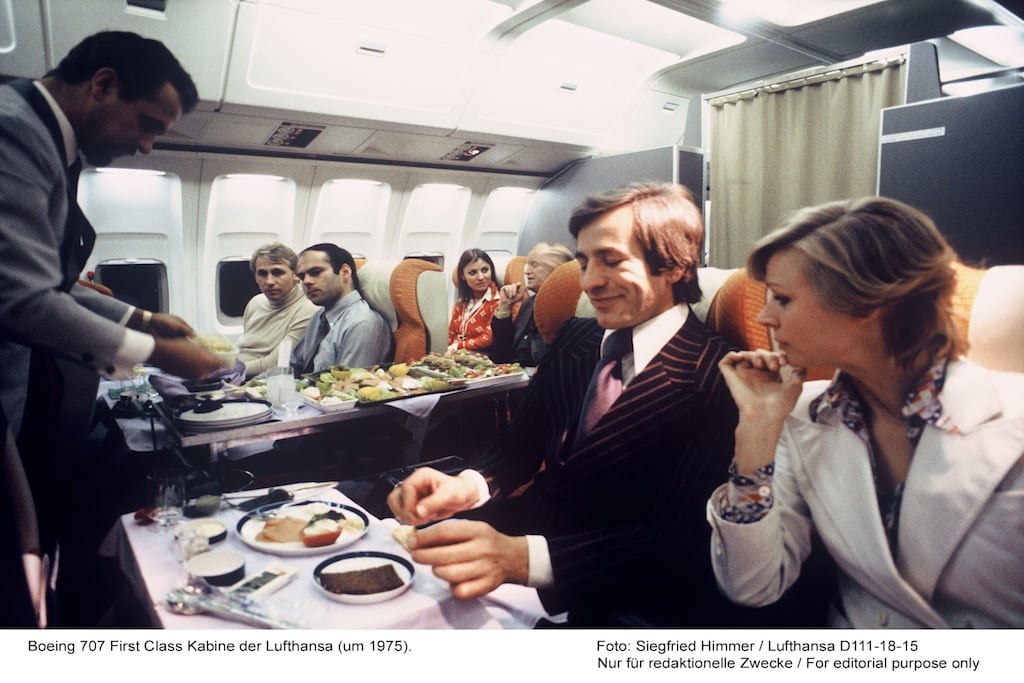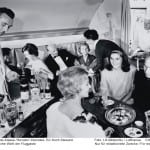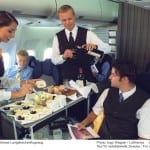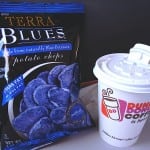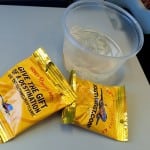Skift Take
The good news about the current state of airline food is that, on some airlines, the options for paid meals are now better than the free meals everyone complained about. If only they didn't run out of the good stuff before they get to the back of the plane.
- Introduction of the first class “Senator” service. En chef steward made for the pleasure of his passengers (1958).
- Boeing 707 first class cabin of Lufthansa (around 1975).
- Business Class on Lufthansa long-haul Airbus A340, 1998
- JetBlue’s custom Terra Blue chips.
- The sack of peanuts that made peanuts worth much more than peanuts, thanks to Southwest.
On this day in 1919, the first airline meal – a three-shilling lunchbox – was served between London and Paris. Here are some more notable moments in the history of plane food
October 11, 1919: The first airline meals were served on a Handley-Page flight from London to Paris. They were pre-packed lunch boxes at three shillings each (15p).
1936: United Airlines installs the first on-board kitchens to provide air passengers with hot meals. Other airlines soon follow suit.
1950s: The golden age of air travel. Table cloths and silver service. This 1958 promotional video from Pan Am sums it up perfectly. “Spacious cabins, air conditioned but draught-free. Roominess extends to the powder rooms. Near sonic speed but inside, no movement at all. Delicious food adds to the enjoyment. It’s prepared in four simulateously operating galleys, where dishes can be cooked in five-minute ovens. The travail has been taken out of travel…”
March 2, 1969: Concorde enters service. Flights on the aircraft – with British Airways and Air France – become renowned for their high-quality cuisine. Champagne, caviar, black truffle, foie gras, and lobster with saffron were served to this passenger on one of the model’s final flights, in 2003 .
1970s: Airline deregulation sees the cost of tickets fall. Offering the cheapest fare becomes more important than providing the best food and service. Southwest Airlines, the world’s first low-cost carrier, starts flying in 1971.
1973: French airline Union de Transports Aériens recruits chef Raymond Oliver to reevaluate their menus. Airlines begin to favour salty, rich and spicy food that is suited to reheating and retains its flavour at 30,000ft. As explained in our recent Travel Truths feature ” Why is plane food so bad?” : “At high altitudes our taste buds simply don’t work properly. The low humidity dries out our nasal passages, and the air pressure desensitises our taste buds, which is why airlines often opt for salty stews or spicy curries.”
Read More About Airplane Food:
- The Long Life and Quick Demise of the Airline Peanut
- The Healthy In-Flight Snack Boxes That Help Flyers Forget About First-Class
- 7 Things Airlines Can Learn From Comedians’ Most Common Complaints
1985: Ryanair is founded. It will go on to become the world’s 7th largest airline, with a fleet of more than 300 planes, but will face constant criticism about the cost of its in-flight food and drink. It currently charges £5.50 for a cheese and tomato panini and £3 for a cup of tea.
1987: Robert Crandall, chief executive of American Airlines, reportedly trims $40,000 off the carrier’s annual outgoings by removing a single olive from every salad served in first class.
2001: The website airlinemeals.net launches, giving passengers a forum to discuss plane food, and to post photographs of in-flight suppers. Nearly 30,000 images have been uploaded since.
2001/2002: The September 11 terrorist attacks have an influence on in-flight dining. Airlines begin using plastic cutlery. Some carriers – particularly in the US – suffer financially, prompting many to cut costs by dropping meal services in favour of peanuts and soft drinks.
2006: A plot to blow up at least 10 transatlantic flights using liquid explosives, sees all liquids greater than 100ml banned from flights. Passengers are left with little option but to purchase overpriced drinks from the airport terminal shops or an even more overpriced drink on board their plane. The rules remain in place today.
January, 2009: An amusing letter sent to Sir Richard Branson, describing a “culinary journey of hell” on board a Virgin Atlantic flight, goes viral. The meal contained “more mustard than any man could consume in a month”, potatoes “passed through the digestive tract of a bird”, a “cuboid of beige matter”, and “a dessert with peas in”.
July, 2009: British Airways scraps free meals on thousands of short-haul flights in an attempt to cut losses, further blurring the lines between full-service and no-frills carriers. This year the airline began charging passengers more when they check in a bag.
2011: British Airways gets help from Heston Blumenthal, of Fat Duck fame, for its in-flight offerings – a partnership that was recorded for the Channel 4 documentary Heston’s Mission Impossible. Other airlines also seek help from celebrity chefs. Singapore Airlines sign up Carlo Cracco, a two-star Michelin chef in Milan, and Air France employs Joel Robuchon.
December, 2012: The Japanese flag carrier, Japan Airlines, serves Kentucky Fried Chicken to its passengers over the Christmas period. In Japan, the restaurant’s food is a surprisingly popular part of the festival season.
April 2013: Air Baltic unveils a novel new food ordering system that allows customers to choose every aspect of their in-flight meal when they book their seat.
July 2013: A report by Travelsupermarket.com reveals that airlines charge up to 2,600 per cent more than supermarkets for in-flight food and drink.
![]()
The Daily Newsletter
Our daily coverage of the global travel industry. Written by editors and analysts from across Skift’s brands.
Have a confidential tip for Skift? Get in touch
Tags: food and drink
